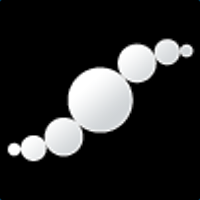Now that this thread has been bumped anyway, some things I'd recommend trying with EQs:
- As a prerequisite (for starting out) get a well driven sound. Not too high gain-ish, though, as some EQ actions might get lost. Let's say like a solid classic rock riff kinda gain.
- As another prerequisite, either put a looper in front of everything, use a plugin amp sim or reamp, the main idea being that you don't have to play yourself while tweaking. For the best outcome of all these tests, this is absolutely crucial as our playing will instantly and automatically adjust once EQ settings are different - and we don't want that as it'd blurry any comparison. Also, our short term aural memory is *really* short term, so you don't want to shorten it even more by having to play between adjustments.
- Grab a full parametric EQ. At least the mid band should be fully parametric, as in including frequency, boost/cut and Q parameters. For those not familiar, the latter controls the frequency bandwidth left and right of your center frequency. Take a look:
This is a pretty low Q value, resulting in a very wide frequency range being affected:
View attachment 36001
And this shows a higher Q value, resulting in a pretty narrow frequency range:
View attachment 36002
- Now place that EQ after your driven amp block.
Note: You might already want to significantly lower your monitoring volume for a start as some rather ear piercing "frequency events" may emerge.
- Grab a band and set its center frequency to some possibly guitar-relevant value. Something around 1kHz is a good idea. Keep the Q value at default for now (
Note: there's no unified labeling/calibration for Q values, so in case you don't have a graphical representation, you need to check things out and listen - but you will have to do that anyway).
- Boost that frequency and listen. You might even want to boost it to the max to really know what's going on (you will then as well know why I recommended to lower your monitoring volume - a 24dB boost at 1kHz isn't what your doctor ever ordered...).
- Move the frequency around. This will already be telling a lot.
- Raise or lower the Q value and listen. Move the center frequency around again. Doing this with a high Q factor will most certainly remind you of a wah already.
- Go back to a frequency around 1kHz, adjust the Q value so it's really sticking out (very likely a Q value a bit higher than the default will do).
- Now move the entire EQ block in front of the amp!
At this very point, you will very likely (no, make that certainly) notice a *huge* difference in the outcome.
- Proceed with the various actions you already did with the post-EQ and listen.
Some notes: Even with the highest amount of boost, the overall volume will not even remotely raise as much with a pre-EQ compared to the same setting used in a post-EQ. Instead, the distortion of your amp will partially "eat it up" (due to the compressing nature of any overdrive).
In addition (and that's one of the most interesting takeaways of all these maneuvers) the overdrive character will change quite a bit.
The lower the drive settings, the more a pre-EQ will sound similar to a post-EQ, the higher the drive settings, the more the EQ boost will be eaten up and there's usually a certain drive range at which you may notice the EQ to do the most drive character shaping "magic" (too little gain and it'll sound more like post-EQing, too much gain and a lot of the EQ-impact might be eaten up - but that's really just a rough rule of thumb).
We could get into this much, much further (doing similar things with a graphic EQ, doing similar things with multiple parametric EQ bands, nesting multiple EQs, drive pedals and amp blocks, doing almost surgical EQ tweaks, etc...), but IMO the things above already cover the most fundamental ways of using EQs in a guitar rig.
A very rough, generalized rule of thumb would be: Pre-EQ to shape your drive characteristics, post-EQ to do overall sound adjustments. In addition, pre-EQ-ing will likely work fine with pretty extreme boosts/cuts whereas you will likely need to be careful with post-EQs.
I think all this is really worth to be checked out as not only will it teach you a lot (it certainly did teach me a lot and still does) but it'll also allow you to do some sound tweakings that you possibly couldn't do otherwise, especially in case you're almost but not really there.
As a rather typical example: You may want your tone to "sing" a bit more in the higher registers without the lows getting muddy. So, just boost that very range with a pre-EQ. It's basically what you're doing with a treble booster (or, sort of flipped around, with a low-cutting TS kinda drive), just much more flexible. And as that very frequency range might then get too prominent, you might want to tame it using a post-EQ with a sort of "negative" version of the pre-EQ (again obviously depending on the amp model and drive amount used).



 )
)

